6 Reasons Your Shop Needs A Forklift Trailer Mover (+ 3 ways they reduce waste)
Why Efficiency Is Critical In Manufacturing
The old adage says, “time is money.” But is that true?
Of course, time and money are not the same thing - in fact, time and money may not even be equals. But where the saying is spot-on is the simple fact that time spent on-task is profitable, while time spent off-task is not.
In manufacturing, any time not spent on producing materials is time that hurts your bottom line.
That’s why companies with efficient manufacturing systems inevitably rise to the top and leave their competition in the dust.
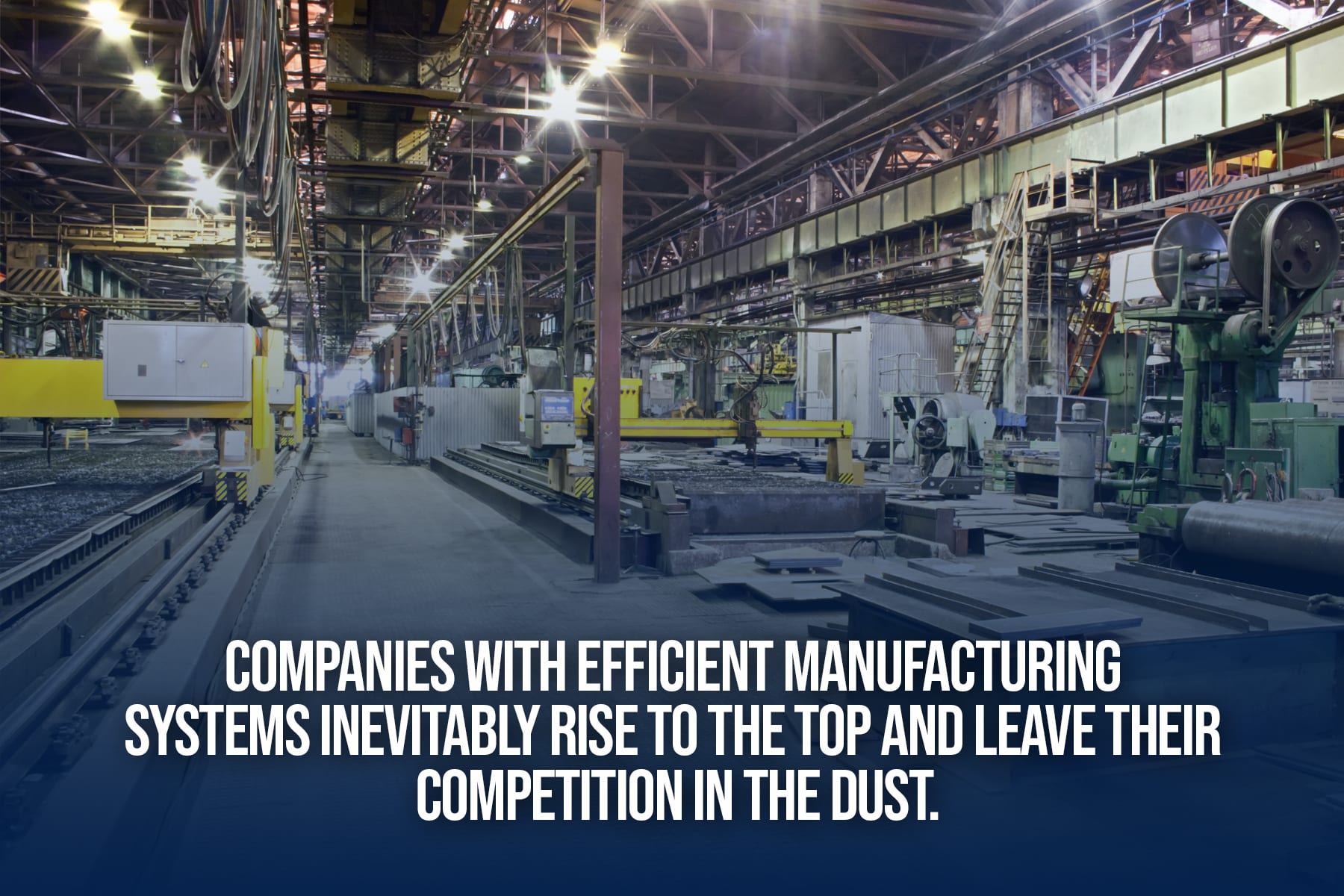
Ultimately, this leads to better products, happier customers, and larger profits.
So, how can your manufacturing company start increasing its efficiency? Let’s find out!
Productivity vs. Efficiency
To begin, we need to ensure that we understand the difference between productivity and efficiency.
The definition of productivity from a manufacturing perspective is “the ratio of output to input in production” In other words, when something is produced, how much time does it take?
Think of it this way:
Your manufacturing line produces 500 units in one week. If you boost your production rate to 700 units in the following week, your productivity has increased by the number of goods or 200 units.
You have increased the number of goods produced in the same unit of time. This is an increase in your productivity levels.
Where productivity is more focused on increasing the quantity being manufactured, efficiency refers to the quality and effectiveness of the work being done. The definition is “the ability to do something or produce something without wasting materials, time or energy.”
Efficiency is more important than productivity because when efficiency increases, productivity inevitably increases.
On the other hand, an uptick in productivity does not necessarily guarantee a spike in efficiency.
For example:
Let’s say you produced 40% more units in one month than the prior period but later learned 30% of those units were defective. Though productivity has gone up, efficiency has gone down.
That’s why it’s so important to focus on efficiency (producing something without wasting materials, time, or energy) instead of production (pumping out more materials).
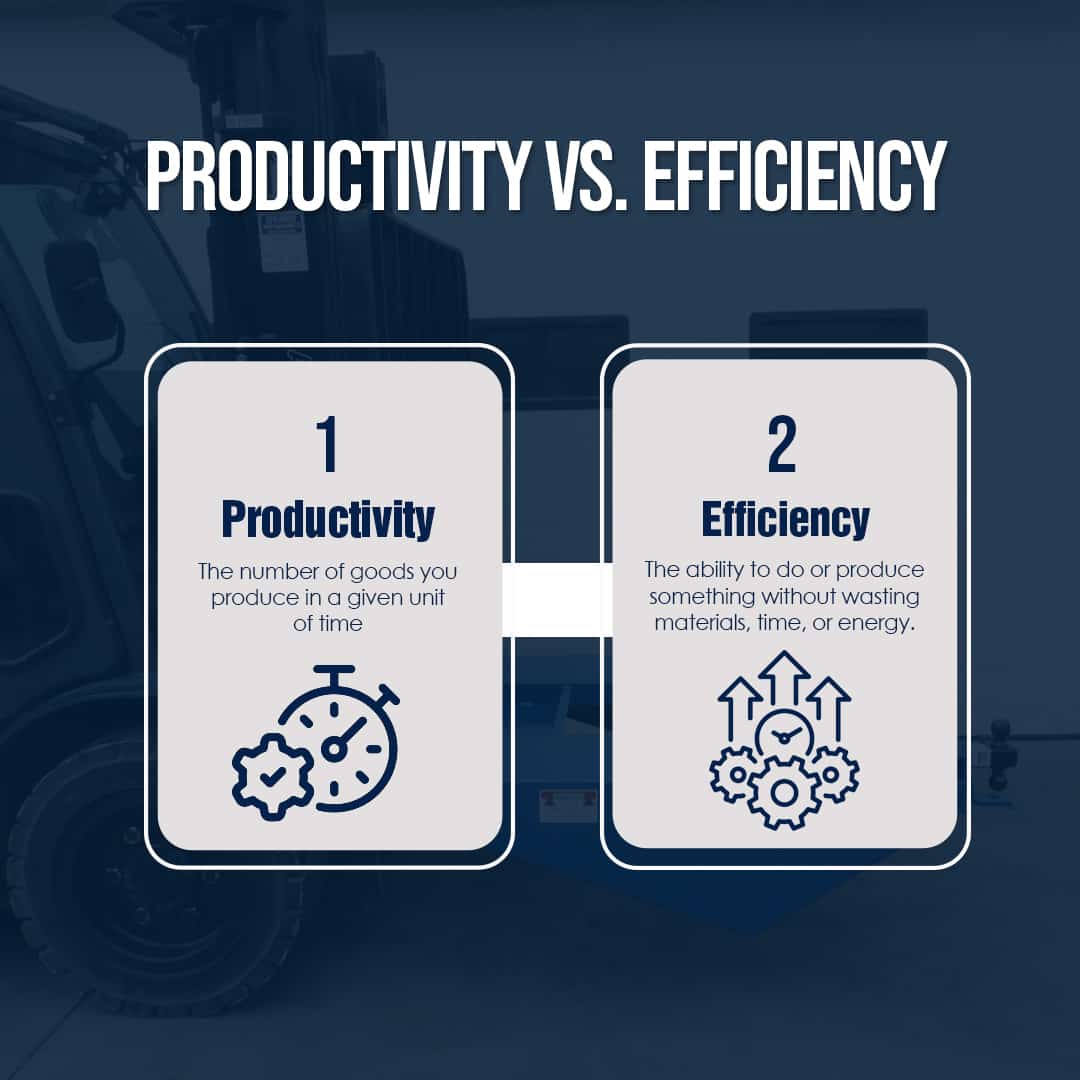
3 Types Of Manufacturing Waste
So, are you ready to improve your efficiency?
You’ll have to begin by figuring out where you are wasting materials, time, or energy.
Here are three categories where you could likely increase the efficiency of your manufacturing plant.
1 - Waste of Transport
Suppose you come home from the store with 8 bags of groceries. If you take 2 bags each time, you’ll have to take four trips to the car and back.
Alternatively, if you can handle four bags, you’ll only have to take two trips to the car and back. You’ve effectively cut your time in half for carrying in the groceries.
The concept here is simple: moving products from one place to another is wasteful!
It adds no value to your products and takes money out of your pocket. This waste is particularly expensive in manufacturing, as you need both vehicles and manpower to transport your goods.
2 - Waste of Motion
Wasted motion is an unnecessary movement by both man and machine.
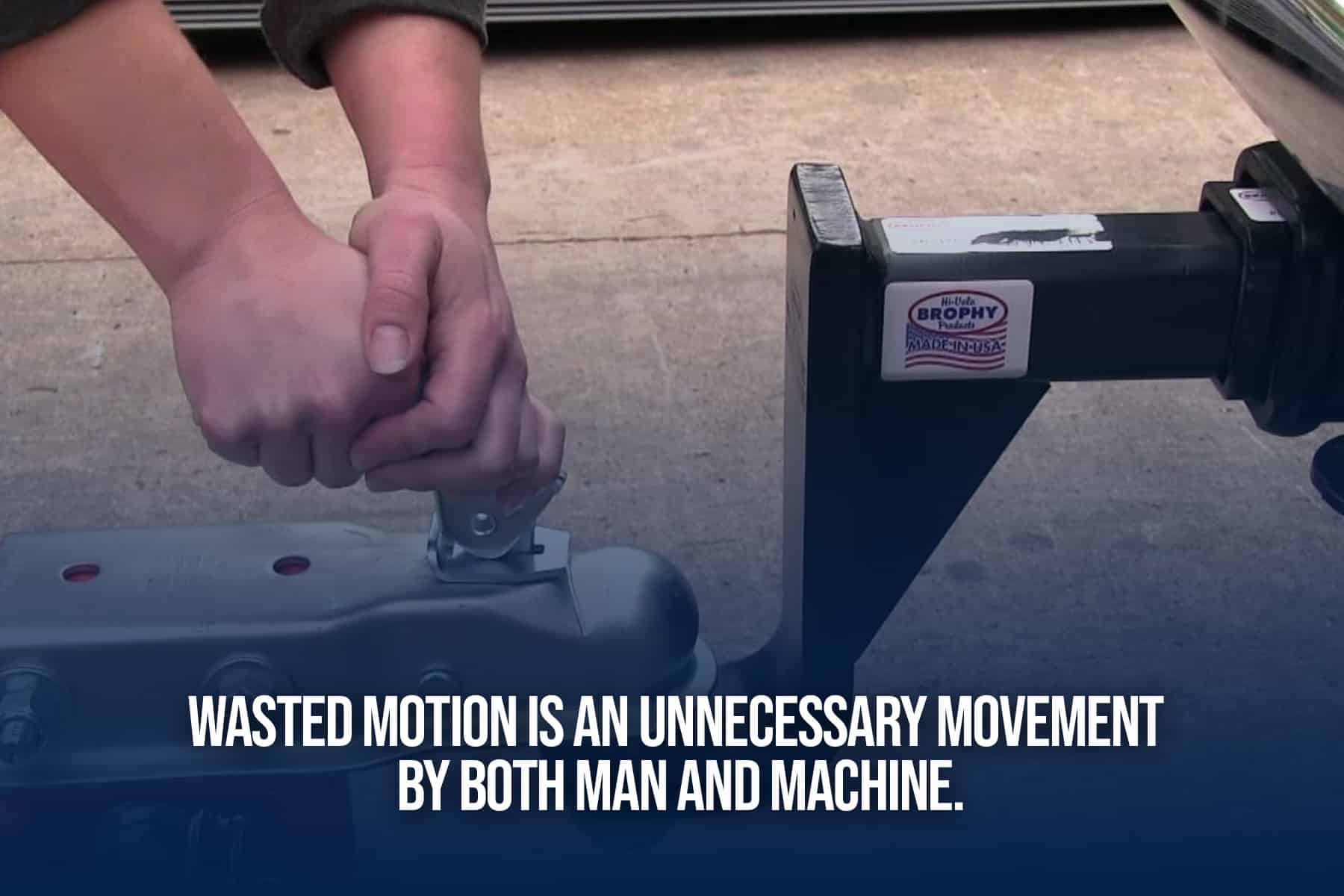
Since this article is about forklift trailer movers, let’s use that as an example.
Traditionally, you would have to climb out of whatever vehicle you were using to move the trailer, attach the hitch, and probably secure several safety chains before climbing in again.
As you can imagine, these motions cost you time and money. Alternatively, reducing the number of motions it takes to complete a task saves you time, money, and sometimes even frustration.
3 - Waste of Space
Ask a facility manager to list the biggest challenges they face, and they almost unanimously include “space” in their top three battles.
That’s because it’s so common not to have the space you really need to complete a task efficiently.
If that’s not enough, overly crowded spaces can become hazardous for workers.
It’s completely worth the effort it takes to make sure you are maximizing the space in your manufacturing plant.
6 Ways A Forklift Trailer
Boosts Your Efficiency
We started this article by talking about efficiency.
Why? Because improved efficiency is the goal of our unique forklift trailer mover.
So how does Sidekick Attachment’s forklift trailer mover jumpstart your efficiency? Let’s take a look!
Hands-Free Trailer Attachment
Undoubtedly, one of the biggest perks of a forklift trailer mover is the fact that you never have to get off the forklift to move a trailer.
Our trailer mover slides seamlessly onto the forks of your forklift. Then, it easily attaches to many different types of trailers. The self-locking attachment ensures you won’t have any accidents while moving the trailer.
Simply set the trailer down and put the trailer mover attachment wherever you desire when you're finished.
It literally only takes a minute or two to move a trailer, RV, or any other piece of equipment with a ball hitch.
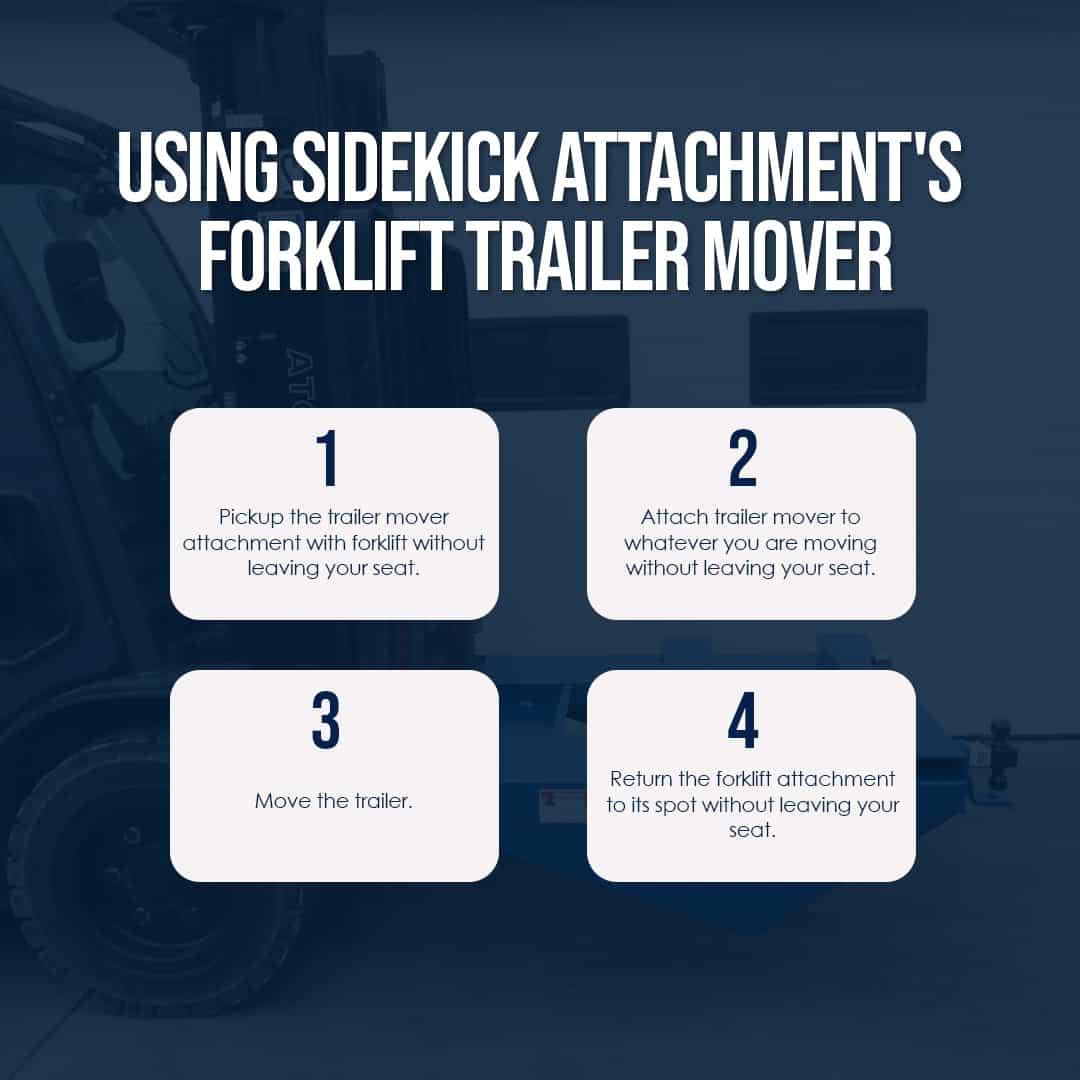
Less Equipment Needed To Move A Trailer
Pretty much every type of shop that manufactures anything has a forklift around. They are absolutely essential.
However, if you manufacture items that need to be frequently moved (like RV’s), you may need to have several trucks or tractors available to move whatever you are producing.
Talk about unnecessary overhead.
Not only does buying equipment to move trailers cost thousands of dollars upfront, but it also costs money to keep them running and filled with fuel.
It’s particularly inefficient if you could use something you already had (like a forklift) to move trailers around your plant.
Of course, a forklift trailer mover gives you that opportunity. Rather than wasting money on extra equipment you don’t need, you can repurpose your forklift to move almost anything with a hitch.
Safely Move Trailers
Do you remember the first time you tried to back up with a trailer attached to your truck or tractor?
It’s as confusing as trying to figure out nutritional information on food labels.
Turn the steering wheel right, and the trailer goes left...right?
Unfortunately, this means that anytime you have a new or inexperienced employee, they won’t be able to do the job of moving trailers around the manufacturing plant. Instead, you’ll have to rely on experienced employees who would be better utilized doing more important tasks.
Even if you have a lot of experience moving trailers, the fact that you are using mirrors and can’t see the back of the trailer makes it dangerous.
With a forklift trailer mover, you face the trailer, which makes moving them much more intuitive and safe.
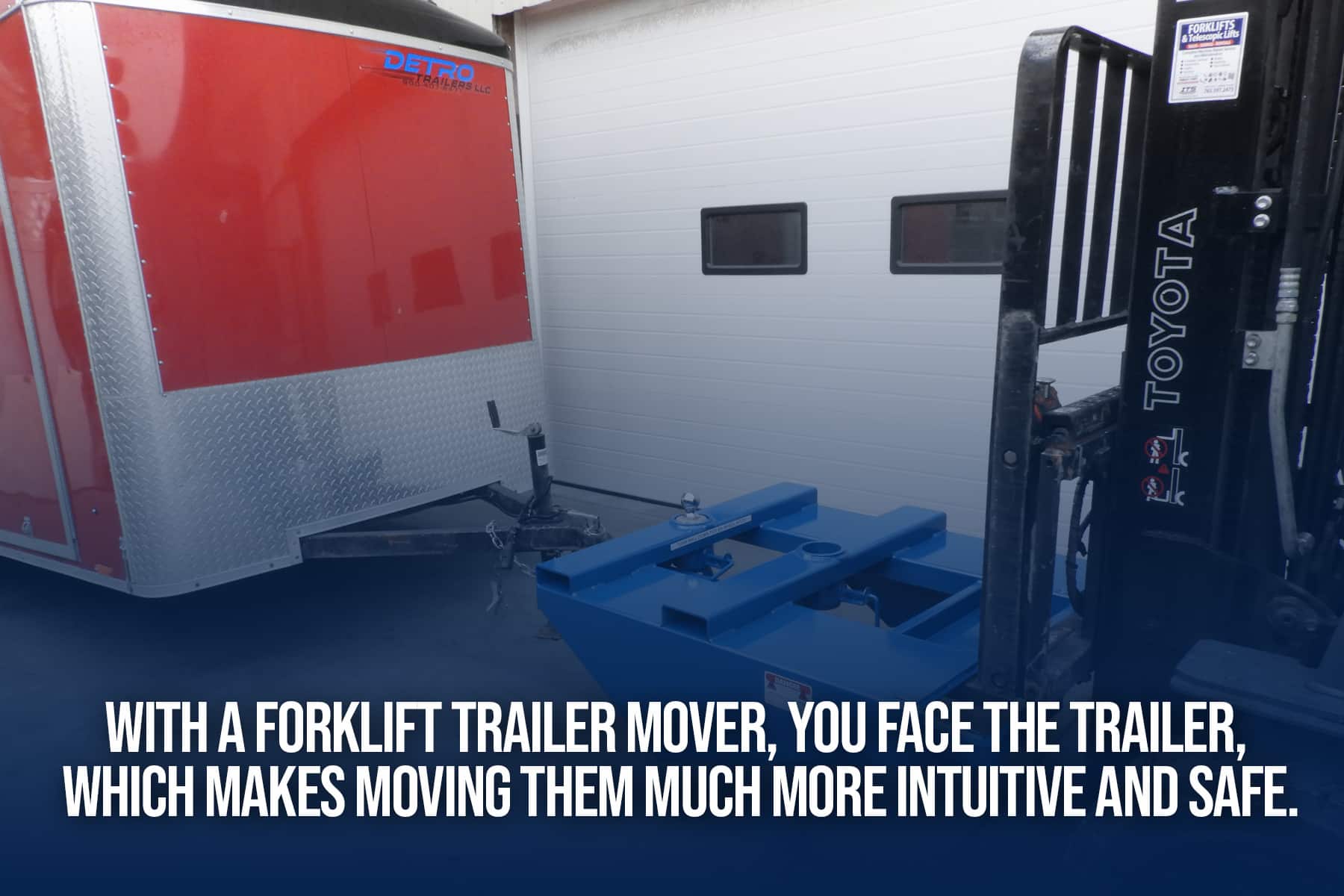
Waste Less Space In Your Manufacturing Plant
Let’s make a quick comparison:
How big is a forklift when compared to a tractor or truck?
Probably about half the size!
Plus, forklifts use rear-wheel steering, which means they can maneuver into much tighter spaces than a truck or tractor.
The bottom line is that forklifts waste way less space in your shop than most other vehicles used to move trailers. If you can utilize a forklift trailer mover, you’ll save space for other more critical functions in your production.
Move Multiple Trailer Styles
There are plenty of different trailers that might be used around a manufacturing shop.
For example, A gooseneck trailer gets its name from its hitch, highlighted by a long, arched "neck" section at the front.
The unique coupler is designed to clear a pickup's closed tailgate, and it connects to a ball inside the bed for a frame-mounted hitch positioned over the rear axle.
Alternatively, a fifth-wheel trailer has a hitch that allows the driver to connect a cargo attachment to the back of a large vehicle. Their unique hitch requires the U-shaped coupling to be in the bed of the truck.
Need a visual?
If you’ve seen a transport on the highway, then that’s a prime example of the fifth wheel design.
But here’s the thing:
Most trucks only have the capability of towing one or maybe two types of trailers.
On the other hand, our forklift trailer movers have the capability of moving several trailer styles:
- Bumper Hitch
- 5th Wheel Hitch
- Gooseneck Trailers
Again, it’s more bang for your buck!
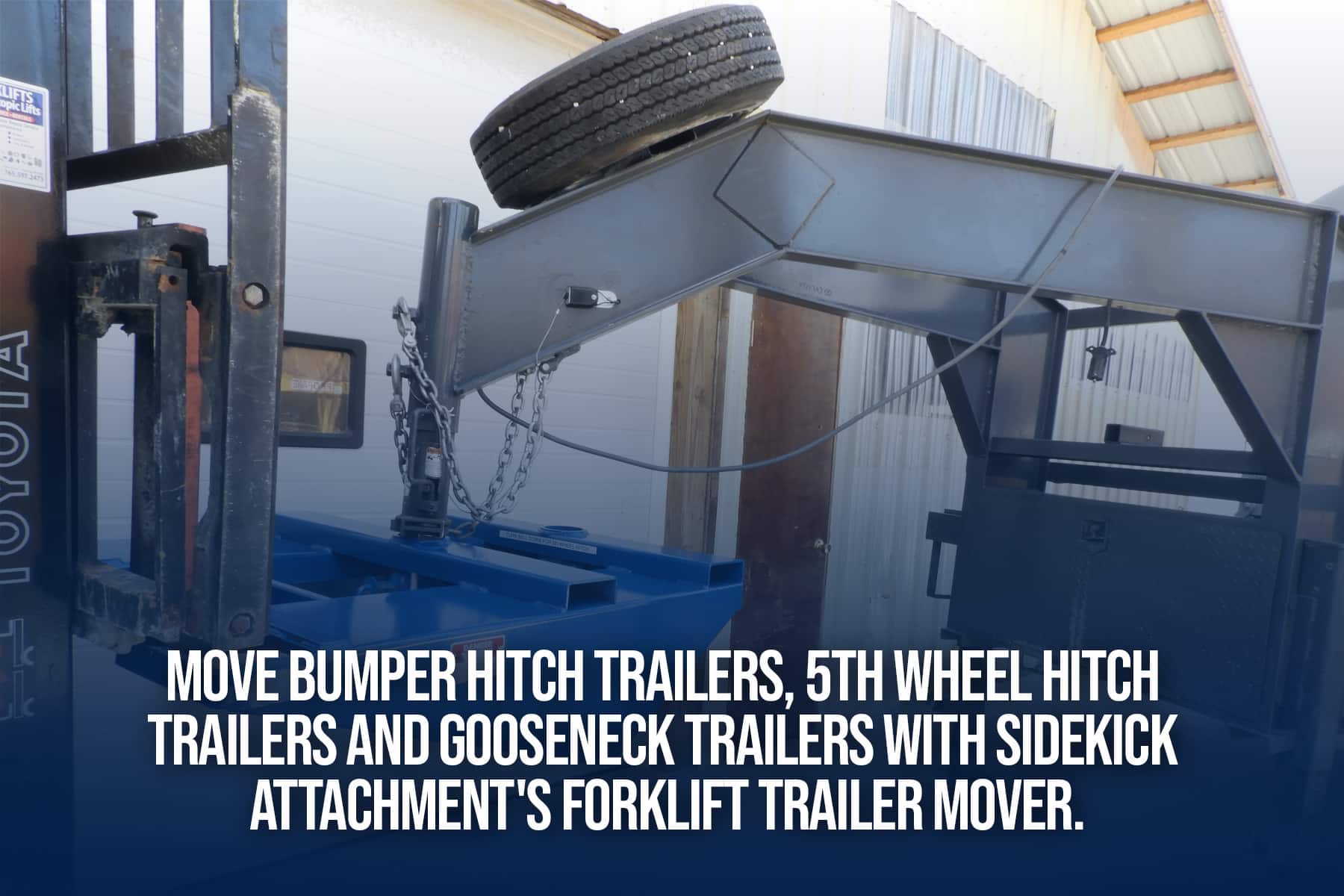
No Safety Chains Or Extra Gadgets
Most of the time, hooking up a trailer involves securing several safety chains and sometimes other gadgets as well.
Since safety is of utmost importance, it is reasonable that safety chains need to be attached. However, with the self-locking mechanism on our forklift trailer movers, no chains are required.
That’s one extra step eliminated.
Now it is true that some people try to jerry-rig their forklifts to move trailers and other objects around the shop. It’s common to see a forklift with a hole drilled in one fork or ball hitch attached.
We hate to be the bearers of bad news, but in this case, it’s for your own good.
Things like drilling a hole in forks or attaching a ball hitch to your forklift are not OSHA compliant.
If you choose to take the risk anyway, just know that you will be fined if OSHA discovers your practice. And is dealing with that stress worth it, especially when there are other quality items available on the market?
Absolutely not!
Plus, altering your forklift with holes and ball hitches is hard on the machine itself. For example, forks with holes in them often begin bending.
In this case, forgo the chains, the gadgets, and the jerry-rigging, and get a forklift trailer mover that is safe, OSHA approved, and efficient.
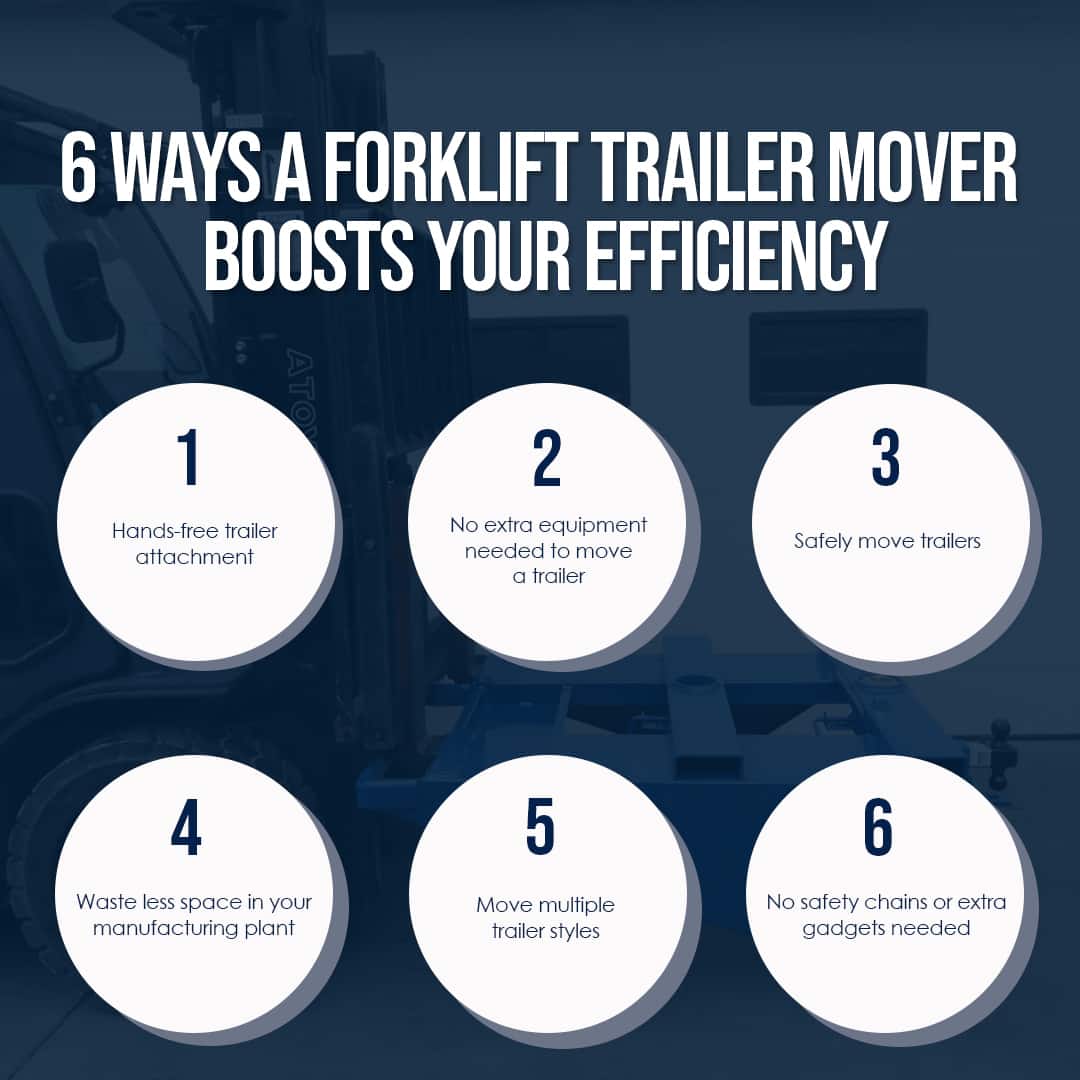
4 Ideal Uses For A Forklift Trailer
Admittedly, a forklift trailer mover may not be necessary for every manufacturing plant. After all, if you aren’t moving trailers (or similar items), you don’t need a trailer mover.
However, some shops may find them incredibly useful!
Let’s take a look at a few examples.
Woodshops
Many shops that produce items like cabinets, trim, crown molding, and more have several installation trailers.
Having a forklift trailer mover available at the shop to move these trailers around is invaluable.
For that matter, any production company with trailers getting loaded and leaving the shop regularly is a great fit for a trailer mover.
Furniture Shops
Furniture shops are similar to wood shops - sometimes, they have several installation trailers as well.
Beyond that, furniture shops often offer delivery - and while some deliveries happen in box trucks, moving furniture around the shop often happens in smaller trailers. Plus, an occasional pull-behind trailer is used to deliver furniture.
RV Plants
At RV plants, the products that are being manufactured need to be moved! It’s critical to have an efficient way to move all those RVs around.
This is where the 5th wheel hitch capability of Sidekick Attachment’s trailer movers proves invaluable since many RVs are “5th wheel RVs”.

Trailer Manufacturing Plant
There’s a bit of irony in this one, but places that actually manufacture trailers are an ideal fit for a trailer moving forklift attachment
Why Sidekick Attachment's Forklift Trailer Mover Is Unique
There are other forklift attachments that move trailers available on the market. So why choose the forklift trailer mover from Sidekick Attachments?
First of all, our trailer mover is truly unique!
It’s extra sturdy, and the self-locking mechanism, paired with the ability to move multiple types of trailers, makes it stand out from the crowd.
But Sidekick Attachments is the best company to work with - not just because of the quality products we offer, but because of our superior customer service and industry knowledge.
Need some examples?
- We have a 15-day satisfaction guarantee on everything we offer
- There is a 90-day warranty on all our parts and equipment. If it breaks, we make it right.
- When you choose an in-stock forklift trailer mover, it ships within 2 days.
- We have extensive product knowledge and manufacturing expertise from our partnership with Iron Bull Manufacturing.
- Our products are easy to order - just call us or order online. If you aren’t sure what you need, we are happy to give tips and advice.
In short, our commitment to superior products and focus on your satisfaction is what makes buying a forklift trailer mover from us unique!
Conclusion
Taking your first step toward maximizing efficiency at your manufacturing plant is not difficult.
Stop wasting time, motion, and space when you purchase a forklift trailer mover from Sidekick Attachments.
Instead, pump out quality products and leave your competition behind.
It’s easy. All you have to do is:
- Find your part: We help you find the part that is correctly sized for your machine
- Order your part: After you purchase, we package your part correctly and ship within 2 days.
- Your forklift does more! Enjoy the increased efficiency and safety of your forklift.
If you are interested in more forklift attachments, check out our pallet forks and forklift extensions.
Just contact us and get a quote. We look forward to hearing from you!

